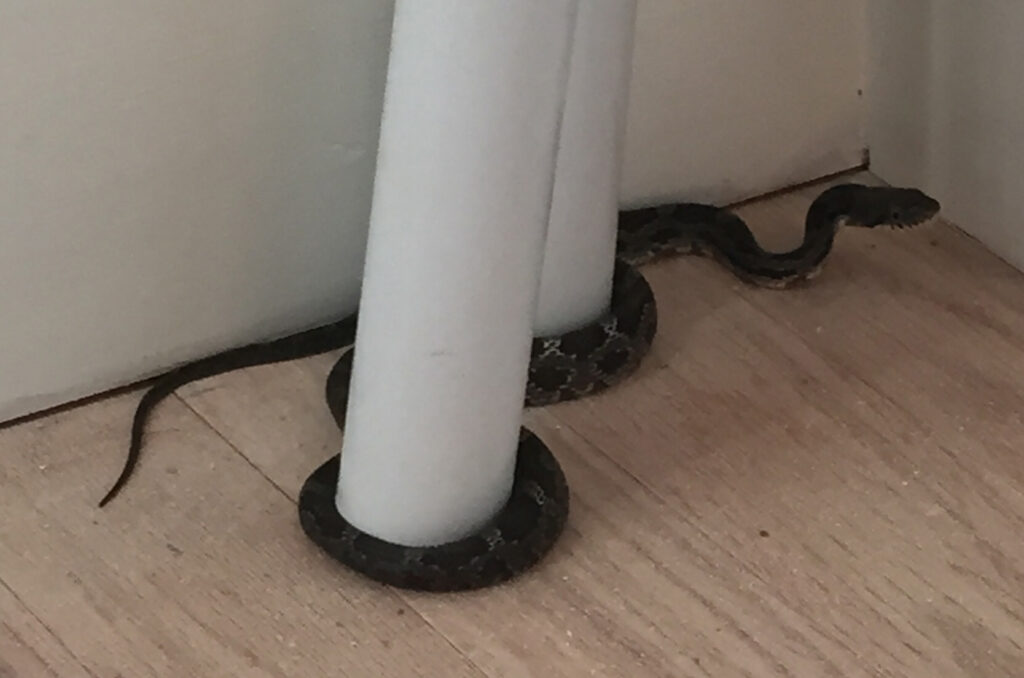Here’s another conundrum of a snake. The Eastern Ratsnake looks completely different as a juvenile, but then mellows out into an almost mostly black snake. However once it’s an adult, you can easily confuse this with the Black Racer snake, which is also black. Both the Eastern Ratsnake and the Black Racer can have a little bit of white/pale color under their chins, throat and on lips, however the Black Racer doesn’t have as much. So if you’re looking at one snake in the wild, you can’t really be like, “Oh hey can you just get the other kind of snake over here so I can compare to see which one has more white under the chin?”
Anyway, the two ways that I think are helpful in distinguishing the two is that the Eastern Ratsnake is definitely glossy. In addition, the Ratsnake can have specks of blotched juvenile pattern in their black sales, of which might be tipped with white. The Black Racer has matte scales (when I’ve looked at the two next to each other in photos it is pretty clear which was cool) and doesn’t have any kind of white tips on the scales, it’s just all black.
Identification tips aside, I LOVE THIS SNAKE! Why? Because it hangs out in my shed and garden, and hopefully eats all of the field mice that get into everything and poop everywhere and try to live in my car, and are generally something that I don’t want around.
Edit: So, as you can see from the featured image, this snake CLIMBS TREES. This blue bird house is about 10 feet off the ground. This snake is looking for a snack. This is a big snake. I still like them, but not when they try to eat the baby birds!
Alternate Names: Black ratsnake, Alleghany black snake, black chicken snake, black Coluber, black pilot snake, black racer, blue racer, chicken snake, mountain black snake, mountain pilot snake, pilot, racer, rat snake, rusty black snake, scaly black snake Size: 42-72" long Habitat: Pine flatwoods, pine savannas, mesic pine-oak forests, prairies, cultivated field Identification: "Body uniformly black dorsally in adults; some individuals with faint black stripes on a gray-black body or with juvenile pattern incompletely obscured (see below); venter with an irregular black-and-white checker-board pattern interspersed with black smudges, with pink replacing white in some individuals; ventral pattern fades posteriorly becoming all gray in older adults but a black-and-white pepper pattern in younger individuals; chin and anterior portion of venter of neck plain white; white pigment also occurs on lower half of supralabials. The body in imaginary cross section is shaped like a bread loaf, with a flat venter." From virginiaherpetologicalsociety.com










